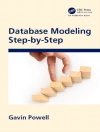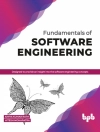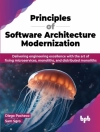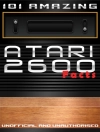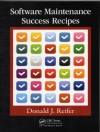How we understand our shared and individual heritage, interpret and disseminate that knowledge is increasingly central to contemporary society. The emerging context for such development is the field of heritage science. Inherently interdisciplinary, and involving both the Arts and Humanities, engineering, conservation and the digital sciences, the development of heritage science is a driver for change; socially, economically and technically. This book has gathered contributions from leading researchers from across the world and provides a series of themed contributions demonstrating the theoretical, ethical, methodological and technical methods which lie at the heart of heritage science. Archaeology, conservation, museology, the arts, forensic sciences, and heritage management are represented through collaborative research with specialists in applied technologies including object and terrestrial laser scanning, multi-spectral imaging, visualisation, GIS and 3D-printing.Together, the chapters present important case studies to demonstrate the recent advances and best practise within the discipline, highlighting the value of digital transformation across the heritage community that includes objects, monuments, sites and landscapes spanning two million years of natural and cultural history from all over the world.
Visual Heritage: Digital Approaches in Heritage Science is aimed at a broad academic and practice-led readership, which extends across many disciplines and will be of considerable value to scholars, practitioners, and students working within heritage and computer science at all levels. The content, which applies heritage science across two million years of cultural history will be appreciated by a general audience, as well as those wishing simply to explore the vast range of potential technical applications across all the disciplines represented in the book.
Tabela de Conteúdo
1 Introduction.- Section 1: Global Perspectives in Heritage Science and Technology.- 2 A. Aguerre, Open World, Open Minds: Keeping a Global Dialogue Reflections on the Re ACH Initiative.- 3 M. Santana Quintero et al., Developing an Ethical Framework for the Digital Documentation of Heritage Sites.- 4 A. S. Wilson et al., Curious Travellers – Using Web-scraped and Crowd-sourced Imagery in Support of Heritage Under Threat.- Section 2: Modelling, Interpreting and Reconstructing the Past.- 5 A. Hardy et al., Visualising Deep Time History in Context Using Accessible and Emergent Technologies: The GLAM Sector Experience.- 6 J. Kowlessar et al., Applications of 3D Modelling of Rock Art Sites Using Ground-Based Photogrammetry: A Case Study from the Greater Red Lily Lagoon Area, Western Arnhem Land, Northern Australia.- 7 C. Villa et al., 3D Documentation of Stone Sites at Ilulissat, West Greenland.- 8 G. Hua Geng et al., The Digital Restoration of an Ancient Skull’s Appearance for Palaeoanthropological Study.- 9 C. G. Elkins, Resurrecting Hor: The Philosophical Application of the Digital Tradition.- 10 S. O’Connor et al., Visualising Animal Hard Tissues.- Section 3: Digital and Virtual Heritage Research and Applications.- 11 K. Devine, Exploring 222 Years in Space and Time: The User Experience of the Virtual Sydney Rocks.- 12 P. Murgatroyd et al., The Europe’s Lost Frontiers Augmented Reality Sandbox: Explaining a 2.5 Million Euro Project using Play Sand.- 13 H. Rushton and M. A.l Schnabel, Immersive Architectural Legacies: The Construction of Meaning in Virtual Realities.- 14 L. Sou et al., Getting the Measure of Brochs: Using Survey Records Old and New to Investigate Shetland’s Iron Age Archaeology.- 15 A. D Holland et al., Digital Refit Analysis of Anthropogenically Fragmented Equine Bone from the Schöningen 13 II-4 Deposits, Germany.- 16 L. Wilson et al., Industrial Heritage Conservation: Digital Data Applications in Heritage Science and Engineering Contexts.- 17 T. K Kabora and K. Campbell, Archival Photography, UAV Surveys and Structure-from-Motion Techniques for Local Heritage Management.- 18 J. Moore et al., A Rapid Recording for the Digital Documentation of Bradford’s Rich Industrial Heritage.- Section 4: Cultural Connections and Creative Industries.- 19 K. Johnson et al., Manual/ Digital Interactions in ‘Project Code-named Humpty’.- 20 K. Thompson et al., Error Bred in the Bone.- 21 D. Pett et al., Fad Touch: Creative Economy Engagement.- 22 O. Nilsson et al., The Face of Stonehenge – 3D Surface Scanning, 3D Printing and Facial Reconstruction of the Winterbourne Stoke Cranium.- 23 Y. Li and E. Ch’ng, A Framework for Sharing Cultural Heritage Objects in Hybrid Virtual and Augmented Reality Environments.- Section 5: Intangible and Hidden Narratives.- 24 R. Wilson, Britons: Your Crowdsourcing Commemorative Page Needs You”: Imaging and Re-imagining the Digital Memory of the First World War.- 25 G. Neher, Telling Difficult Stories:VR, Storytelling and Active Audience Engagement in Heritage Sites and Museums.- 26 E. Ch’ng, Virtual Environments as Memory Anchors.- 27 Afterword.
Sobre o autor
Professor
Eugene Ch’ng graduated with a best Ph D from the Electronics, Electrical and Computer Engineering Department at the University of Birmingham in 2007. He has 20 years of interdisciplinary research experience, with formal training in art and design, design for the built environment, computational sciences, and humanities and social sciences research. He is founding director for both the NVIDIA Joint-Lab on Mixed Reality and the Digital Heritage Centre, both at the University of Nottingham’s China campus. Professor Ch’ng’s research focuses on VR and Mixed Reality. He is editor in chief for PRESENCE: Virtual and Augmented Reality MIT Press, the longest established journal on VR research. He has authored over 120 publications and has led international grant-funded research which establishes cross-cultural and interdisciplinary collaboration, pioneering the development and adoption of digital technologies across all areas and activities within the cultural heritage domain.
Henry Chapman is Professor of Archaeology at the University of Birmingham. Following an undergraduate degree in Archaeology at the University of Exeter, he moved to the Royal Commission on Historical Monuments of England. Based within their Exeter office, he worked as an archaeological landscape investigator before moving to the University of Hull as a member of the English Heritage funded Humber Wetlands Project, and undertaking a Ph D focusing on the application of GIS in landscape archaeology at the same time. Henry subsequently working on various other wetland archaeology projects at the University of Hull, before moving to Birmingham, initially as part of “Visual and Spatial Technology Centre” (Vista). He was a founding director of the Digital Humanities Hub, before becoming a lecturer. With a primary focus on later prehistory and wetland archaeology, and applied digital technologies, his research centres on the use of GIS, technical survey, and other digital technologies for the study of the past.
Professor Vincent Gaffney is Anniversary Chair in Landscape Archaeology at the Department of Archaeological Sciences at the University of Bradford. His undergraduate degree was taken at the University of Reading, and, following fieldwork at Stonehenge and on the Berkshire Downs, he spent a number of years in museums. Deciding to study for a Ph D at Reading he moved to former Yugoslavia, was based in Ljubljana (Slovenia), but worked on the island of Hvar in Croatia. On returning to Britain, he worked at the University of Birmingham before moving to the University of Bradford. His research has included studies of Roman urbanisation at Wroxeter, survey of Diocletian’s Mausoleum, the wetland landscape of the river Cetina (Croatia), fieldwork in Italy and historic landscape characterisation at Fort Hood (Texas). An early adopter of GIS in archaeology, and an advocate of digital applications in heritage research, he founded the ”Visual and Spatial Technology Centre” (Vista) at Birmingham, and is now part of the “Visualising Heritage” team at Bradford. He leads the UK team within the UK/LBI_Arch Pro “Stonehenge Hidden Landscapes” project, and is Principal Investigator on the ERC Advanced Grant project ‘Europe’s Lost Frontiers’.
Professor Andrew S. Wilson, MCIf A, FHEA is an Archaeologist and Heritage Scientist with wide-ranging research interests in Digital Heritage, Human Bioarchaeology, Conservation, Taphonomy, and Forensic Archaeology. He is based in the School of Archaeological & Forensic Sciences at the University of Bradford. He trained in Conservation at UCL Institute of Archaeology and in Human Bioarchaeology at Sheffield and Bradford. He has worked for the Smithsonian Institution, Wiltshire County Council Conservation Service and in commercial archaeology. Awards include Museums & Galleries Commission National Conservation Award (1999); World’s Archaeological Research Awards (2017); and ALT Learning Technologistof the Year Research Award (2020 – Highly Commended); His research has featured in major interdisciplinary publications including Nature, Science, PNAS, Current Biology, Nature Scientific Reports, PLo SONE. He is Member of the Editorial Board for the Journal of World Prehistory and a member of the Forensic Archaeology Expert Panel for CIf A. He Co-Directs Visualising Heritage with varied imaging and visualisation capabilities at the University of Bradford and has led landmark Digital Heritage projects with research funding from sources including AHRC, Jisc, GCRF, British Academy, HEIF, The Wellcome Trust, Research England, Historic Environment Scotland, Shetland Amenity Trust, HS2 and City of Bradford Metropolitan District Council.


